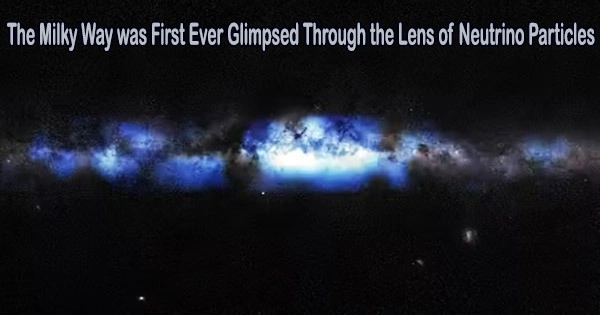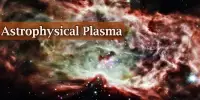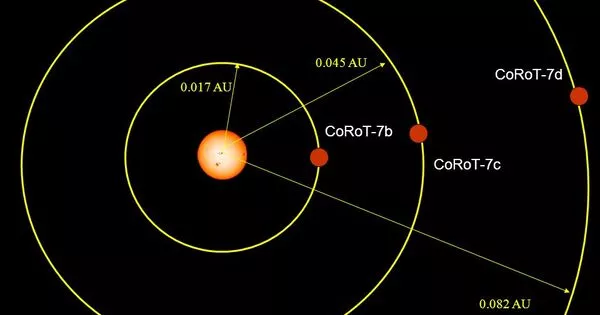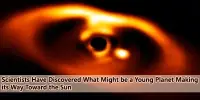We have now seen the Milky Way galaxy through the lens of neutrinos thanks to data gathered by an observatory in Antarctica. It’s the first time that a particle, as opposed to various light wavelengths, has “painted” our galaxy.
Researchers now have a fresh window into the universe thanks to the outcome, which was reported in Science. Cosmic rays, highly energetic charged particles, are hypothesized to have contributed to the production of neutrinos when they collided with other types of matter. There is a lot about cosmic rays that we still don’t understand due to the limitations of our detection technology. Therefore, neutrinos are another way of studying them.
Since ancient times, people have conjectured that the Milky Way, which we can see arcing across the night sky, is made up of stars that resemble our sun. It was discovered in the 18th century that we are looking out from within a flattened sheet of stars. It is only 100 years since we learnt that the Milky Way is in fact a galaxy, or “island universe,” one among a hundred billion others.
In 1923, the American astronomer Edwin Hubble identified a type of pulsating star called a “Cepheid variable” in what was then known as the Andromeda “nebula” (a giant cloud of dust and gas). Thanks to the prior work of Henrietta Swan Leavitt, this provided a measure of the distance from Earth to Andromeda.
This settled a long-running argument and fundamentally altered our understanding of our place in the cosmos by proving that Andromeda is an extremely distant galaxy similar to our own.
Opening windows
As new astronomical windows have opened, we have since viewed our galaxy in a wide range of light wavelengths, including radio waves, distinct infrared bands, X-rays, and gamma-rays. Neutrino particles, also known as “ghost particles” because of their extremely tiny mass and weak interactions with other matter, are now allowing us to observe our cosmic home.
In our galaxy, neutrinos are produced when cosmic rays strike interstellar matter. However, stars like the sun, some supernovae, and possibly the majority of the high-energy phenomena we see in the universe, such gamma-ray bursts and quasars, also produce neutrinos. As a result, they can give us a perspective of very energetic processes in our galaxy that is never possible with just light.
The new breakthrough detection required a rather strange “telescope” that is buried several kilometers deep in the Antarctic ice cap, under the South Pole. The IceCube Neutrino Observatory uses a gigaton of the ultra-transparent ice under huge pressures to detect a form of energy called Cherenkov radiation.
This faint radiation is emitted by charged particles, which, in ice, can travel faster than light (but not in a vacuum). The atoms in the ice are struck by incoming neutrinos, which result from cosmic ray collisions in the galaxy, and produce the particles.
Cosmic rays are mainly proton particles (these make up the atomic nucleus along with neutrons), together with a few heavy nuclei and electrons. These were found to be uniformly showering down on Earth from all directions around a century ago. Since the magnetic fields in the region between stars skew their travel directions, we are yet unsure of all of their sources.
Deep in the ice
Neutrinos can act as unique tracers of cosmic ray interactions deep in the Milky Way. However, the spectral particles are also produced when cosmic rays strike the atmosphere of the Earth. So, in order to discriminate between neutrinos of “astrophysical” origin those coming from alien sources and those produced by cosmic ray collisions within our atmosphere, researchers using the IceCube data needed a mechanism to do so.
The researchers focused on a type of neutrino interaction in the ice called a cascade. These produce roughly spherical light showers and increase the researchers’ sensitivity to astrophysical Milky Way neutrinos. This is due to the fact that, despite being more difficult to reconstruct, a cascade yields a more accurate measurement of a neutrino’s energy than other kinds of interactions.
Analysis of ten years of IceCube data using sophisticated machine learning techniques yielded nearly 60,000 neutrino events with an energy above 500 gigaelectronvolts (GeV). Of these, only about 7% were of astrophysical origin, with the rest being due to the “background” source of neutrinos that are generated in the Earth’s atmosphere.
At a level of statistical significance known as 4.5 sigma, the possibility that cosmic rays impacting the Earth’s atmosphere may be the cause of all neutrino occurrences was categorically ruled out. Put another way, our result has only about a 1 in 150,000 chance of being a fluke.
This falls a little short of the conventional 5 sigma standard for claiming a discovery in particle physics. However, such emission from the Milky Way is expected on sound astrophysical grounds.
The experiment will be ten times larger with IceCube-Gen2, which will allow us to collect many more neutrino events and transform the current hazy image of our galaxy into a detailed one that we have never seen before.
















